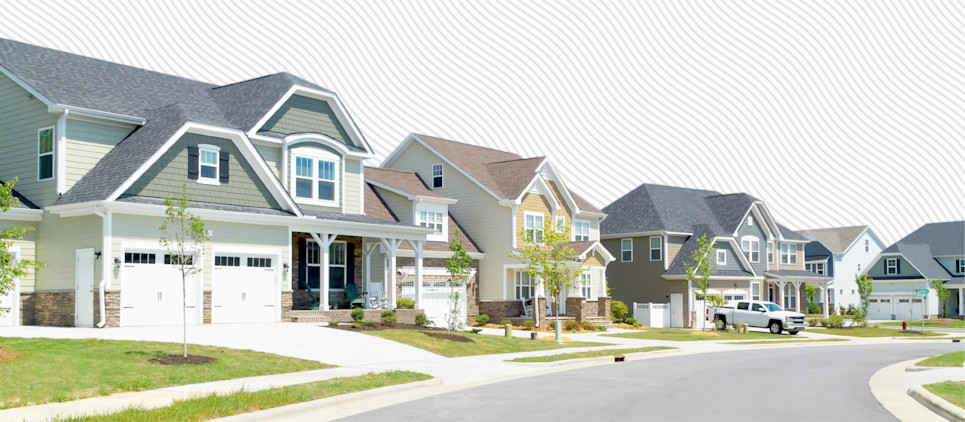A guide to real estate asset classes, property types, and property classes
An asset class is a collection of investment types with similar characteristics that behave similarly in the marketplace. They are broken down into traditional and alternative investment types.
Equities (stock market and bonds), fixed-income investments, and cash and cash equivalents are all traditional asset classes. Alternative investments include real estate, private equity or venture capital, start-up companies, art and antiques, films, and commodities, to name a few.
Real estate is the most common alt investment, especially for those new to investing. The real estate industry breaks down the asset class into property types and property classes so that investors can compare different potential investment properties more efficiently.

Table of contents
The real estate asset classProperty typesWhat are property classes?The real estate asset class
The real estate asset class is defined by “real property,” a term that means land and any improvements made upon it that are permanent. These improvements can be natural (water and trees) or man-made (buildings, homes, and fences).
Although you might hear the term “real estate asset classes,” it’s not an accurate description of real estate types. Real estate is an asset class, but it is not broken down further into asset classes. Instead, different types of real estate are categorized by property type and property class—not to be confused with asset classes.
Property types
The three most common real estate property types are residential, commercial, and land.
Residential
Residential property is simply real estate designed for living. It includes condos, co-ops, multifamily properties, single-family homes, townhouses, and vacation homes. Residential property is considered investment property when rented out because they bring in cash flows through monthly rent while simultaneously building equity as the property appreciates.
Note that multifamily properties are only considered residential if they hold four units or less. If there are more than four units, then that property is deemed to be commercial.
Commercial
Commercial real estate investments are one of the most popular with real estate investors. Commercial property is any property designed specifically to generate income. Among the different types of commercial real estate you’ll find:
Hotels. Hotels offer a unique prospect because room rates are adjustable to meet market demands. Note that the economy—especially during recessions—can greatly impact the hotel industry thereby minimizing your return on investment.
Mobile home parks. As far as commercial property types, mobile home parks are often overlooked, but can be profitable. After you buy the land, you lease out individual parcels to mobile home residents. Because you are only renting out the space and not the residential units, operating expenses and repairs tend to be minimal as does tenant turnover.
Multifamily properties. When listed as commercial, these properties include four or more units for living and can range from an apartment or duplex to a condominium or townhouse.
Office properties. This could be a single property for one tenant that is not meant for living, an office building designed to hold multiple tenants, or even a skyscraper.
Retail spaces. These could include something as large as a strip mall or something smaller and freestanding like a gas station or restaurant.
Self-storage facilities. This type of property rents space to tenants, ranging from containers and lockers to rooms or even outdoor spaces designed for boats or RVs, on a long-term or month-to-month basis.
Land
There are two main categories of land property type: brownfield and greenfield. Either one can include vacant land, which is a plot of land that doesn’t have any established buildings or equipment. Vacant land can be used to develop commercial or residential real estate or as farmland, ranches, or natural resources, including air rights, minerals, or water. Here are the two most common land property types:
Brownfield. Brownfield is land that was previously developed that must be cleaned up before it can be used again. Even if the land is vacant, there are special requirements for investigating land that previously had buildings.
Greenfield. Greenfield is land that was not previously developed for use. It is considered the easiest to develop and is often used for agricultural purposes.

What are property classes?
Property classes are divvied up into three classifications: Class A, B, or C. Real estate agents, brokers, investors, and lenders created these classifications as a quick way to assess and communicate about a property’s quality. For investors, the classes can help indicate different levels of risk and return on investment. Investors can use this information to decide what properties are compatible with their investment strategy.
The assignment of letter grades is made of a combination of factors including property age and location, income levels of tenants, amenities, appreciation, rental income, and more.
Class A
While there is no exact formula, Class A properties are commonly known as well-located buildings of the highest quality in their housing market. They are generally newer, have the best amenities, and are professionally managed. Their tenants earn a high income, and their buildings tend to have lower vacancy rates while demanding higher rent. They often have lower maintenance issues too.
Class B
Class B properties are a step below Class A. They may be a bit older, their tenants have lower incomes, and the buildings aren’t always professionally managed. Rental income is lower, while maintenance issues may increase. Overall, these buildings are considered well-maintained, and they are a value-add investment opportunity because, with improvements and renovations in common areas, they can receive a property class upgrade.
Class C
Class C properties are usually over 20 years old and aren’t located in ideal areas. They often require renovations to update them. Therefore, in the market, these buildings have lower rental rates than Class B and Class A properties.
Bungalow is the best way to invest and manage your real estate portfolio. We work with you to identify, purchase, fill, and manage residential properties—so that you can enjoy up to 20% more in rental income with a lot less stress. Learn more about Bungalow.
Ready to find your next home?
Move-in ready homes and a built-in community so you can feel at home, together — wherever you are.
Suggested articles



